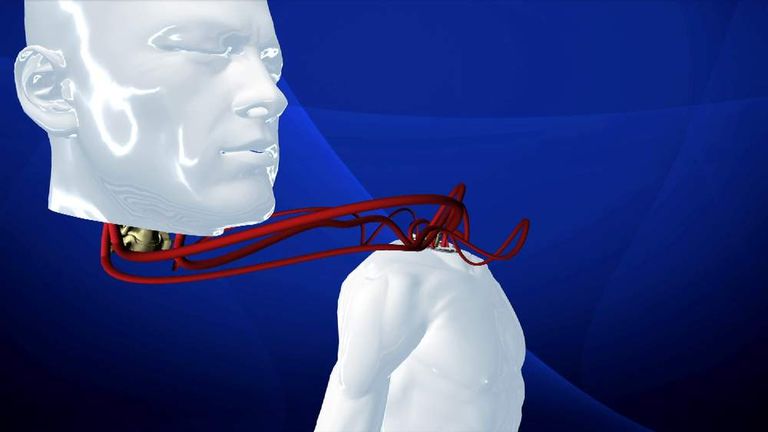Head transplant doctor claims spinal cord breakthrough
Scientists say the successful treatment of paralysed animals could help humans and pave the way for groundbreaking surgery.
Tuesday 20 September 2016 12:39, UK
The surgeon who claims he will perform the world's first head transplant next year has released a series of videos showing paralysed animals that have been 'healed' by his groundbreaking technique.
The videos show a mouse, rat and a dog that are able to walk.
Weeks earlier they had had their spinal cords severed and the ends treated with a chemical that may help them fuse together again.
The work was carried out by researchers in South Korea, who have been collaborating with Italian neurosurgeon Dr Sergio Canavero.
He said the experiments proved the spinal cord could be reconstructed, paving the way for a head transplant on a paralysed human.
Other scientists have dismissed the claim, saying the small number of animals treated do not provide enough proof.
The Korean researchers detail their experiments in a series of papers edited by Dr Canavero for the journal Surgical Neurology International.
In the first experiment, 16 mice had their spinal cords cut.
Half then had a chemical called polyethylene glycol (PEG) injected into the gap between the severed nerve fibres. The rest were injected with a salt solution.
Five of the mice treated with PEG regained some ability to move, suggesting the chemical had helped to fuse the severed nerve fibres, allowing signals from the brain to reach the limb once again.
In a second experiment, the PEG was combined with tiny graphene ribbons that the researchers claim act as "tracks" to ensure the two ends of the spinal cord grow towards each other.
A rat treated with the combination was able to walk again after two weeks.
In the final experiment, a dog had 90% of its spinal cord severed in an injury similar to a stab wound in a human.
Three days after being treated with PEG the dog had regained minimal movement.
After three weeks it could walk, and later wag its tail.




